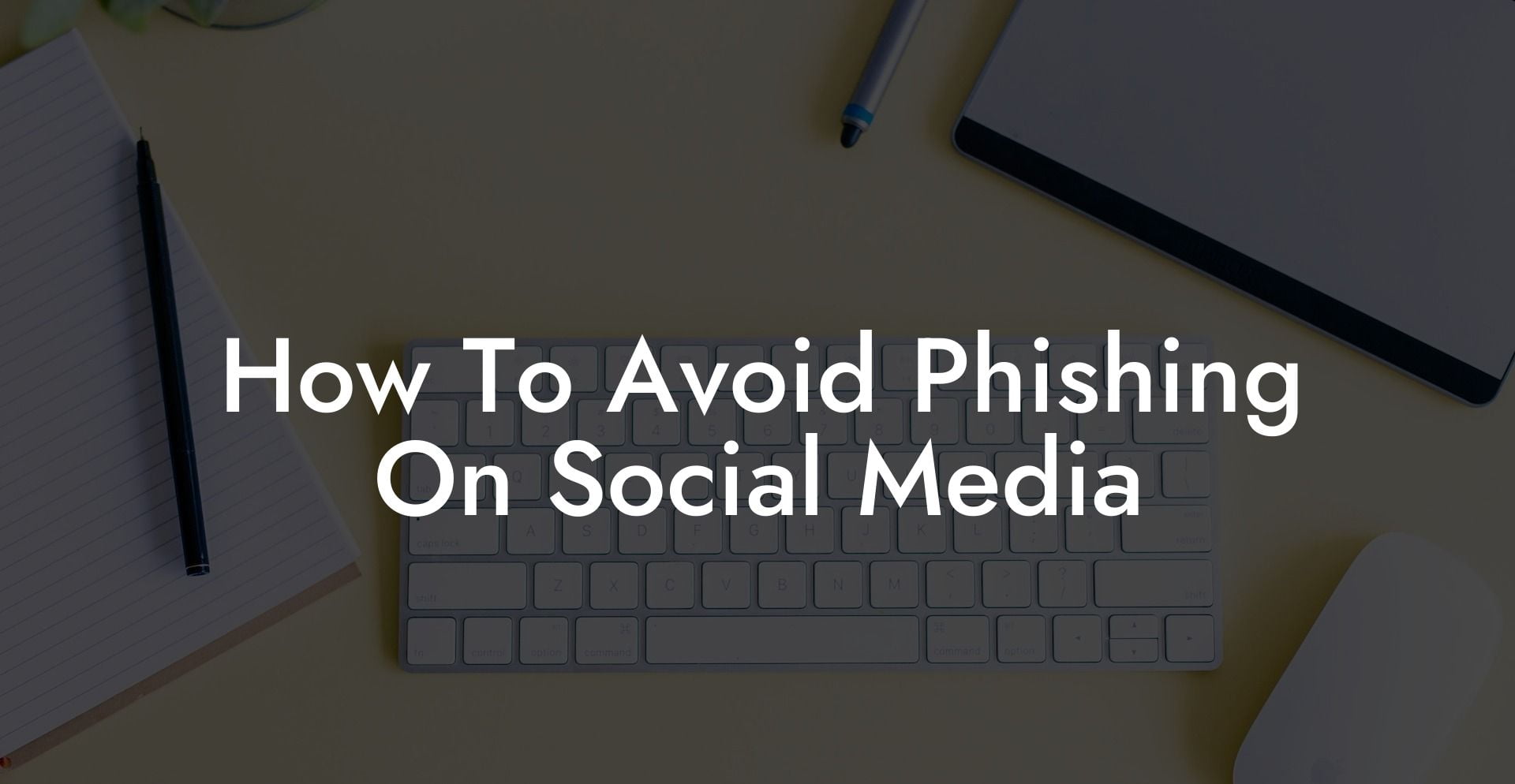In today's digital age, social media is not just a platform for entertainment and networking, but also an avenue for cybercriminals to lure unsuspecting victims into their traps. One of the most prevalent and deceptive tactics is voice phishing, also known as "vishing." This guide will provide insightful information on how to recognize and avoid falling victim to phishing attacks on your favorite social media platforms.
How To Avoid Phishing On Social Media Table of Contents
1. Understand how phishing works on social media
2. Stay cautious with direct messages
3. Beware of suspicious links and requests
4. Analyze friend requests and new followers
5. Set your profile to private
6. Keep your software up-to-date
1. Understand how phishing works on social media
Phishing attacks on social media often involve cybercriminals posing as well-known brands, friends, or acquaintances to trick users into giving away sensitive personal or financial information. They may use seemingly genuine messages or posts with malicious links that can infect your device with malware or lead you to a fake website designed to steal your data. Voice phishing involves phone calls or messages from attackers pretending to represent institutions or companies, attempting to extract sensitive information from their target by gaining their trust.
2. Stay cautious with direct messages
Protect Your Data Today With a Secure Password Manager. Our Top Password Managers:
Phishers often employ direct messages to initiate their schemes. Be cautious when responding to a new message from an unknown individual or even from known contacts if they seem out-of-character. Check their profile to ensure they are legitimate and take note of any suspicious activity.
3. Beware of suspicious links and requests
Be cautious when clicking on links sent to you via social media, particularly those that you were not expecting. Attackers often use shortened URLs or non-descriptive links that hide the true destination. Even links that appear to come from trusted sources can be dangerous. Always verify the authenticity of URLs and avoid clicking on links in unsolicited communications.
4. Analyze friend requests and new followers
Beware of accepting friend requests from unknown individuals or requests from duplicate profiles of existing connections. Cybercriminals typically create fake profiles to initiate phishing attacks. Before accepting any requests, verify the legitimacy of the account by checking for mutual friends and inspecting the profile for unusual activity or few connections.
5. Set your profile to private
Putting your social media profiles on private mode can limit the information available to potential attackers. Choose the necessary privacy settings to ensure only your friends or connections have access to your posts and personal information. Be aware of the information you are posting and remain cautious of sharing sensitive details that could be exploited by criminals.
6. Keep your software up-to-date
Regularly update your devices' operating systems, apps, and security software to prevent any software vulnerabilities from being exploited by attackers. Outdated software is more susceptible to attacks and may leave your accounts and devices at a higher risk of being compromised.
7. Enable two-factor authentication
Use two-factor authentication (2FA) on your social media accounts, as it adds a layer of security that requires a unique verification code or biometric authentication in addition to your password. This can help protect your account even if your password has been compromised.
How To Avoid Phishing On Social Media Example
Imagine receiving a message from a friend claiming to need urgent help, but as hard as you try, there's just something off about it. Their profile picture is different, they keep pushing for your personal information, and they're using an unfamiliar email address. This is a prime example of a visher impersonating someone you know. In such cases, it's crucial to verify their identity through a different platform or call them to confirm their situation before falling into this well-planned trap.
Navigating the treacherous waters of social media requires a combination of caution, vigilance, and knowledge to stay clear of phishing attacks. By following the steps we've outlined above, you can protect yourself from becoming an unsuspecting victim of voice phishing and other social media scams. So, strengthen your online defenses, share this guide with friends and family, and continue to explore our comprehensive blog for up-to-date insights on safeguarding your digital life.
Protect Your Data Today With a Secure Password Manager. Our Top Password Managers:















